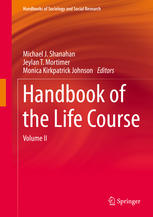

Most ebook files are in PDF format, so you can easily read them using various software such as Foxit Reader or directly on the Google Chrome browser.
Some ebook files are released by publishers in other formats such as .awz, .mobi, .epub, .fb2, etc. You may need to install specific software to read these formats on mobile/PC, such as Calibre.
Please read the tutorial at this link: https://ebookbell.com/faq
We offer FREE conversion to the popular formats you request; however, this may take some time. Therefore, right after payment, please email us, and we will try to provide the service as quickly as possible.
For some exceptional file formats or broken links (if any), please refrain from opening any disputes. Instead, email us first, and we will try to assist within a maximum of 6 hours.
EbookBell Team

4.4
92 reviewsBuilding on the success of the 2003 Handbook of the Life Course, this second volume identifies future directions for life course research and policy. The introductory essay and the chapters that make up the five sections of this book, show consensus on strategic “next steps” in life course studies. These next steps are explored in detail in each section: Section I, on life course theory, provides fresh perspectives on well-established topics, including cohorts, life stages, and legal and regulatory contexts. It challenges life course scholars to move beyond common individualistic paradigms. Section II highlights changes in major institutional and organizational contexts of the life course. It draws on conceptual advances and recent empirical findings to identify promising avenues for research that illuminate the interplay between structure and agency. It examines trends in family, school, and workplace, as well as contexts that deserve heightened attention, including the military, the criminal justice system, and natural and man-made disaster. The remaining three sections consider advances and suggest strategic opportunities in the study of health and development throughout the life course. They explore methodological innovations, including qualitative and three-generational longitudinal research designs, causal analysis, growth curves, and the study of place. Finally, they show ways to build bridges between life course research and public policy.